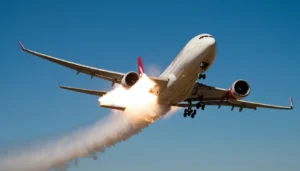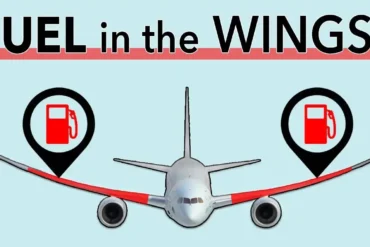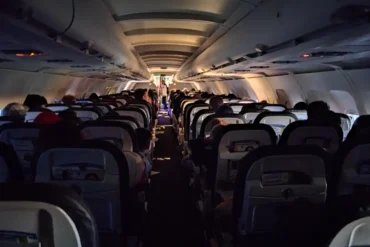In instances where a plane needs to make an unexpected landing before reaching its intended destination—like the recent incident where a Houston-bound flight made an emergency stop in Chicago due to an unruly passenger—there may be a need to jettison excess fuel to achieve a suitable landing weight.
Fuel dumping, often referred to as jettisoning, is an relatively uncommon event that occurs when a plane has to dispose of fuel rather than utilizing it to propel the aircraft during the flight.
Why do planes dump fuel??
In the event of an unscheduled landing before reaching the final destination, the aircraft might be too heavy for a safe landing. Regulations dictate that planes should touch down at a weight lower than their takeoff weight, accounting for the fuel consumption during the journey. If the plane hasn’t flown far enough to burn off the fuel, achieving the ideal landing weight becomes problematic, posing a challenge for the impending landing.
Consider the example of the weekend flight from Houston to Amsterdam, spanning over 5,000 miles. The plane would have carried sufficient fuel for the more than nine-hour journey. However, a mid-flight incident involving a “passenger disturbance” occurred when a customer was informed that his preferred first-choice in-flight meal was unavailable.
Amidst the limited details provided by United Airlines, it appears that the situation on board compelled an unplanned landing in Chicago. The disruptive passenger, not publicly identified, was escorted off the aircraft by local law enforcement from the Chicago Police Department.
Before touching down in Chicago, the plane had to jettison fuel, as indicated by its circular flight path over Lake Michigan. While the lake is a vital water source for millions in Chicago, it also serves as a designated area for fuel dumps due to its remoteness. It’s noteworthy that Lake Michigan is the largest freshwater lake in the U.S. and the fifth-largest globally.
Landing with excess weight, though possible, can strain the aircraft’s tires and brakes, according to Federal Aviation Administration (FAA) guidelines. Fuel dumps, per FAA directives, should ideally occur over remote or oceanic regions or at an altitude allowing fuel atomization before reaching the ground. However, in emergency situations like fires or engine failures, deviations from these guidelines may be warranted, as outlined by the FAA.
To ensure safe landings, planes must maintain a minimum altitude of 2,000 feet above obstacles and stay five miles away from other aircraft, as reported by Business Insider.
When it comes to fuel dumping, the FAA outlines specific conditions: if done at least 5,000 feet above ground in freezing temperatures, 98 percent of the fuel will evaporate before reaching the surface. The remaining fuel in droplet form may lead to localized rain, but its wide dispersal minimizes ground-level effects. The FAA assures that the dumped fuel will rapidly dissipate and diffuse.
Concerns about environmental impact arise, with potential contributions to photochemical oxidant pollution or smog, as noted by the FAA. Despite these concerns, the FAA emphasizes that the vapors released during fuel dumping are “negligible” compared to emissions from ground vehicles and industries.
Given the rarity of fuel dumping, occurring only in emergencies, the FAA suggests that the environmental consequences of this practice are limited.


















